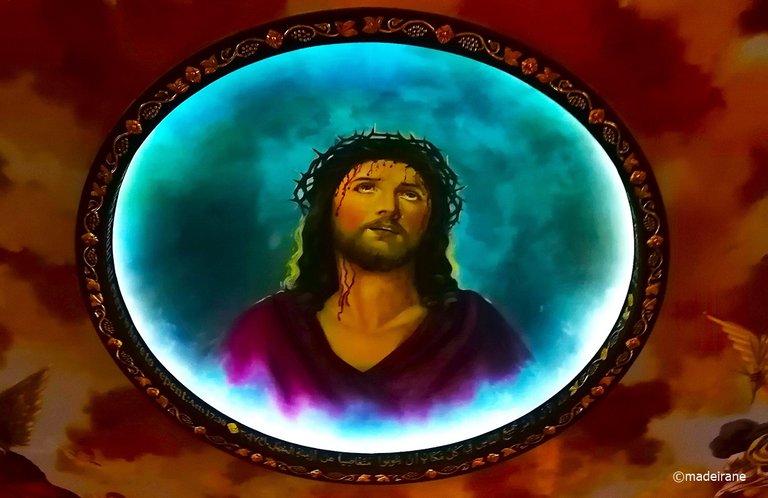
First, I am sending you these pieces of the gentle wind, the road lit by the morning sun and the feeling of adventure in my chest, which I have kept in my mind since the end of the trip to Egypt. Remembering this trip fills me with such a nostalgic, almost photographic state, so I invite you to join me on a journey to Sharm el-Sheikh, which opened its heart to us.

Adventures are magic, but this time I want to take you on a journey through the magnificent Coptic church. To tell you the truth, we didn't even know about such a church, because before that we were fascinated and visited only mosques, but our wonderful guide, while taking us from the Farsha café to the hotel,Sheihk. Remembering this trip, I am overwhelmed with such a nostalgic, almost stopped by this church and took us on a journey into its enchanting beauty.
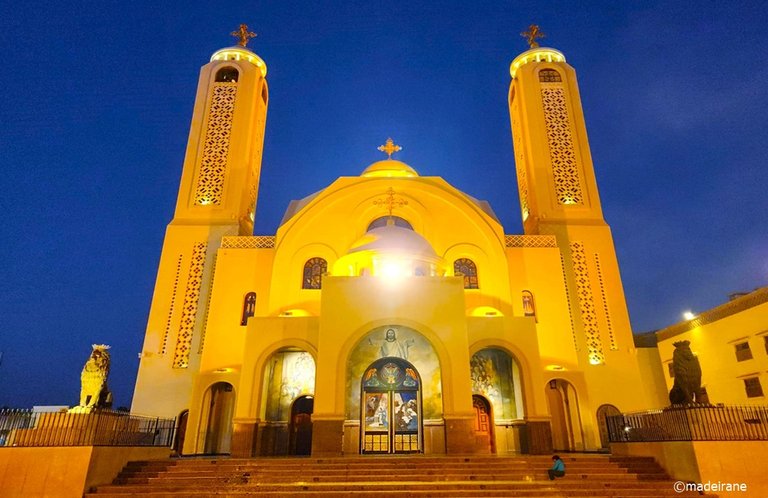
It's a Coptic Orthodox Church in the area of Hay-En-Nur Sharma. The building was built in 2010 with a donation from the faithful Copts - Egyptian Christians. The guide, with a minimum number of dates, told about Christianity as the main religion in Egypt in the period BC. In short, long ago, everyone in Egypt was pagan. In 332 BC, Alexander the Great conquered Egypt and founded Alexandria. Egypt became Christian. In 641, it was conquered by the Arabs and most of them (90%) became Muslims, while the rest remained Christians. Egyptian Christians are called Copts, and they are representatives of one of the most ancient branches of Christianity. Copts (in our time) do not wear crosses, all believers get a tattoo in the shape of a cross on their hand.
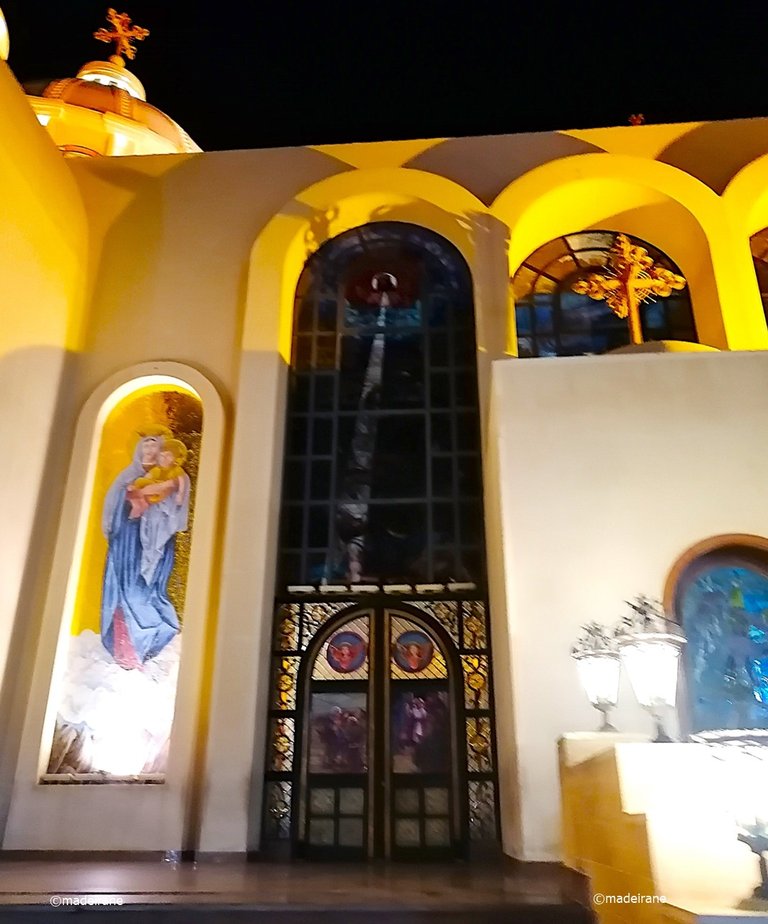
The church is surrounded by a concrete fence, metal detectors and security guards with machine guns met us at the entrance.
The architecture of the Christian temple on the outside is with a minimum of decor and no golden domes. And the protruding columns even look like a mosque. The crosses also have an unusual shape - they are oriented in all directions from which you can look: from below, from all sides around the temple, and even from above. The cross will be visible everywhere. An example of an ultra-modern 3D model. But the crosses on the domes clearly and unambiguously indicate a Coptic Christian church in a Muslim city.
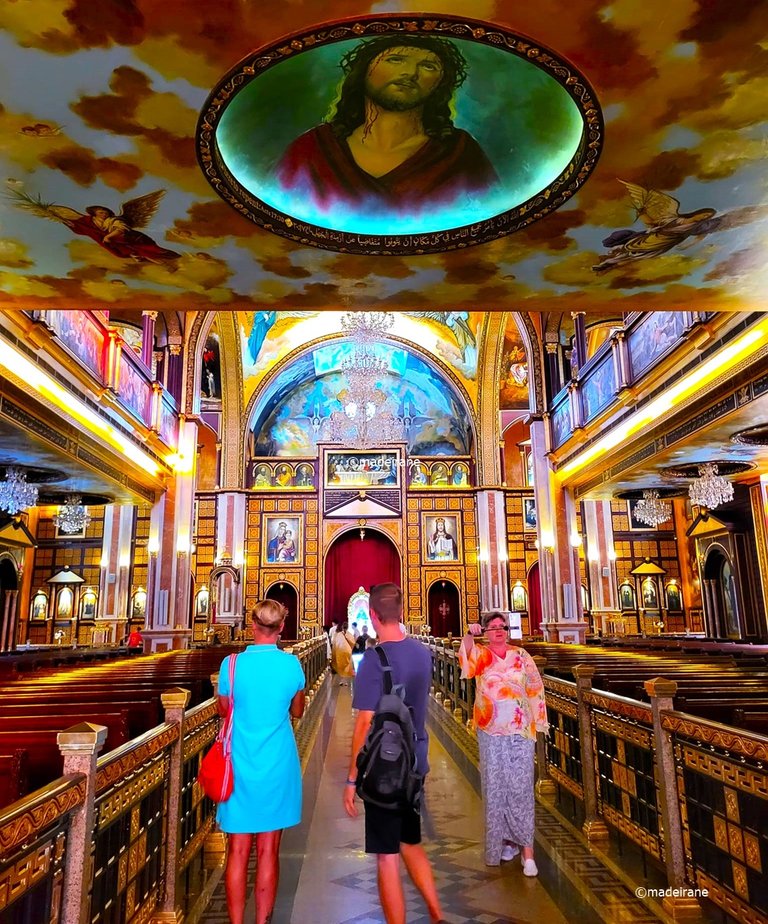
Monumental, sustained style with muted facade colors and smooth, flowing outlines of arches, and what is impossible not to notice - huge stained-glass windows with the faces of saints.
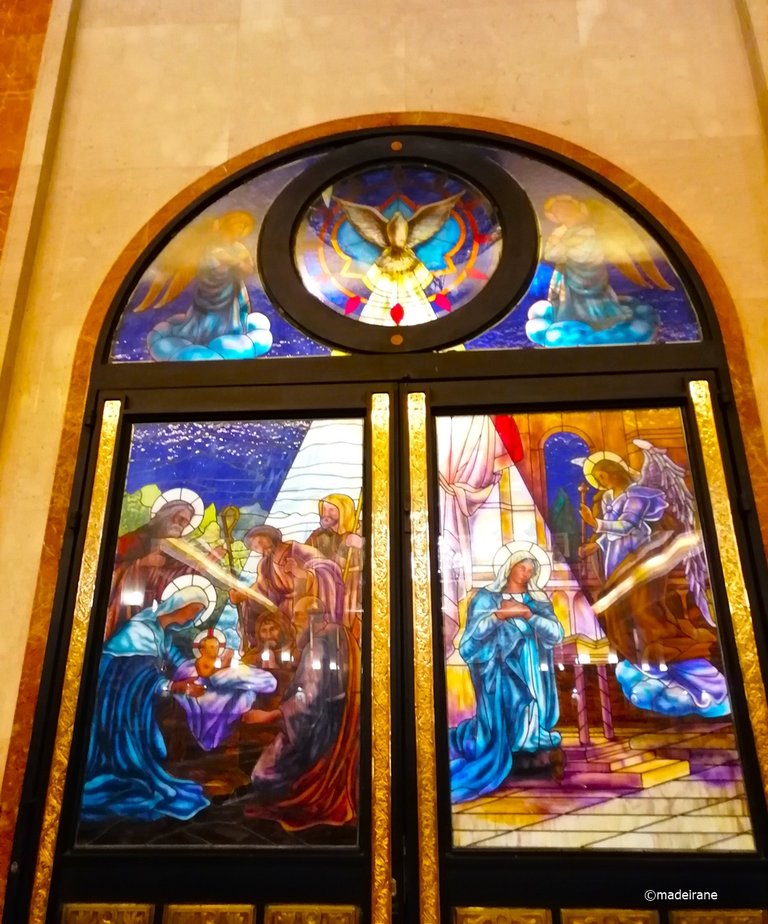
In the dark, we saw a beautiful building with external lighting from all sides of the temple, emphasizing the outline of the building, domes, arches, plus effectively illuminated stained-glass windows. The entrance to the church is guarded by two lions.

We entered the hall of the church. I walked in and was stunned. "What beauty". For a minute I was even speechless! Everything is painted: windows, ceilings, walls. All fragments from the Bible..
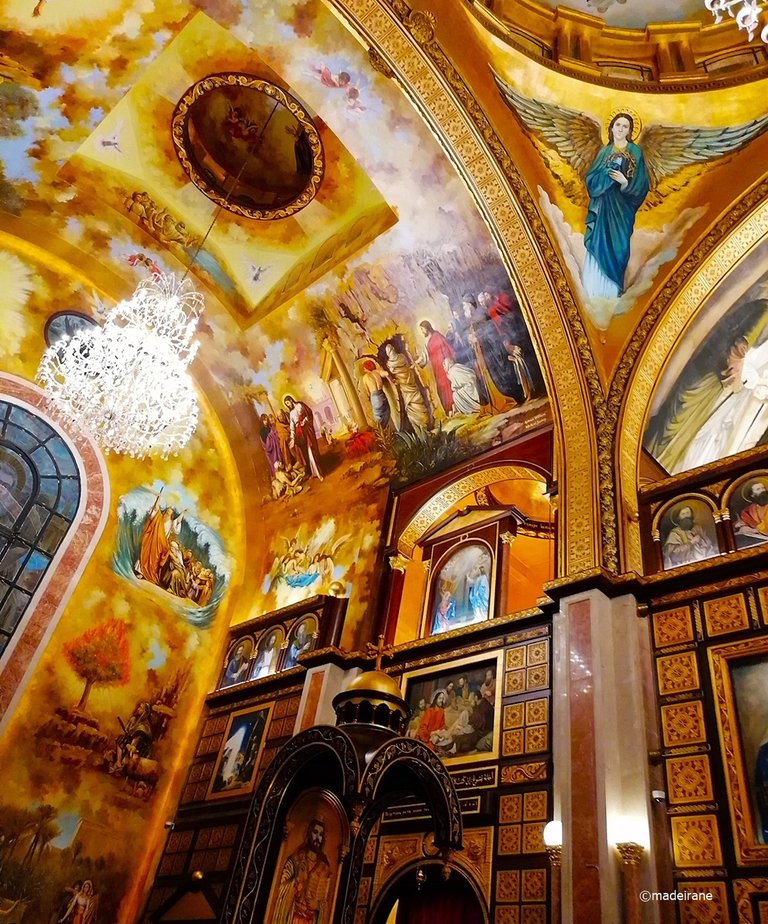
Women praying in the copric church do not have to cover their heads, but they still need to cover their shoulders. I took a thin scarf for this case. They warned that you can take pictures, but it is better to first listen to the story about the history of the church, the techniques and styles of painting. About what is depicted where and what biblical stories are dedicated: from the Old Testament or the New Testament, where are the images of Christ, where the saints are in full growth or their faces, where are the images of entire scenes from the Bible.
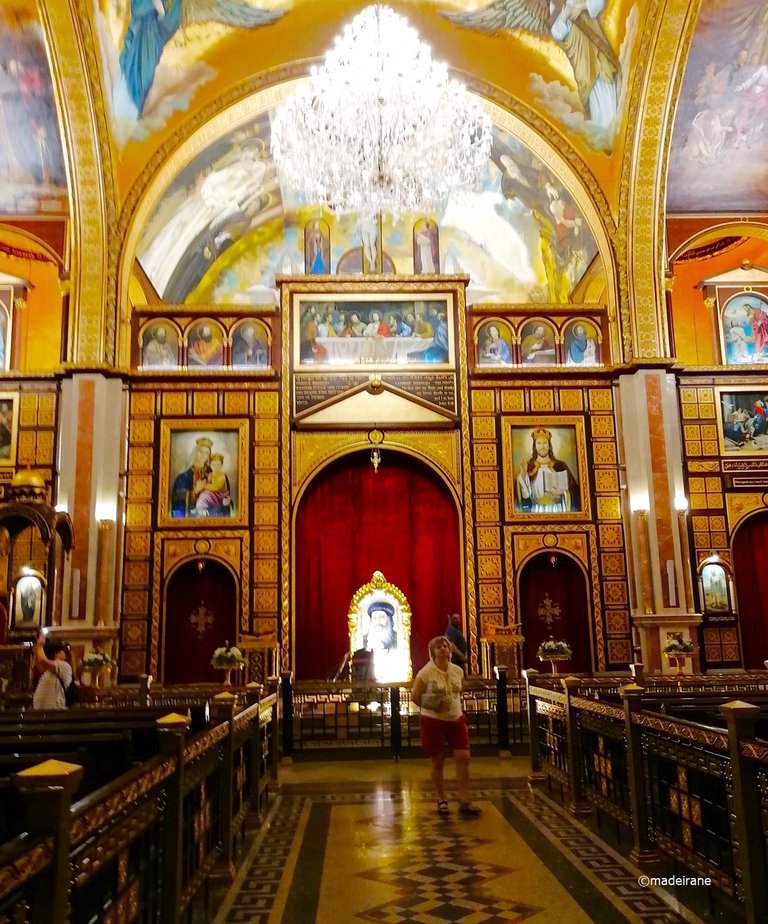
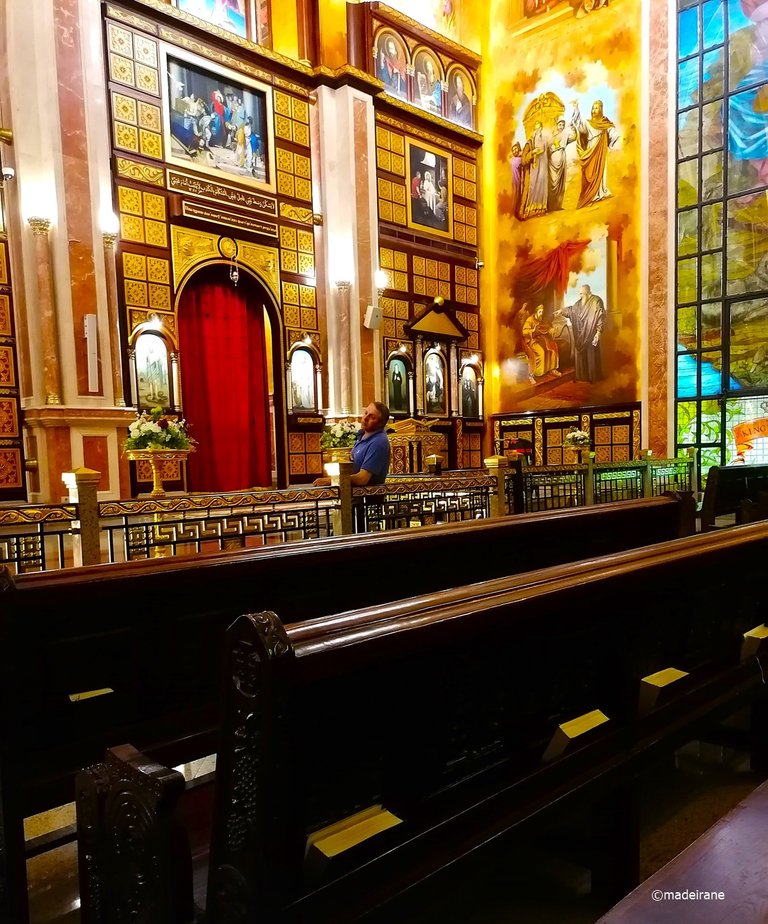
We listened to the guide, but the images and paintings of the interior walls, ceilings and domes were too bright and pompous. All attention switched to the magnificent frescoes, illuminated stained-glass windows, and iconostasis. I did not expect such luxury.
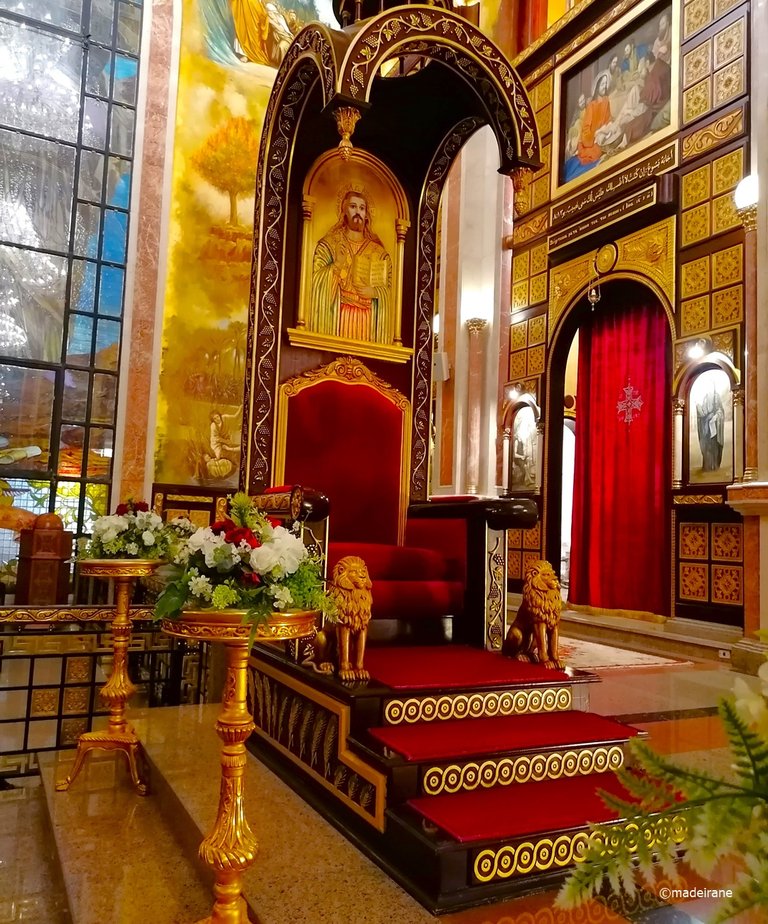
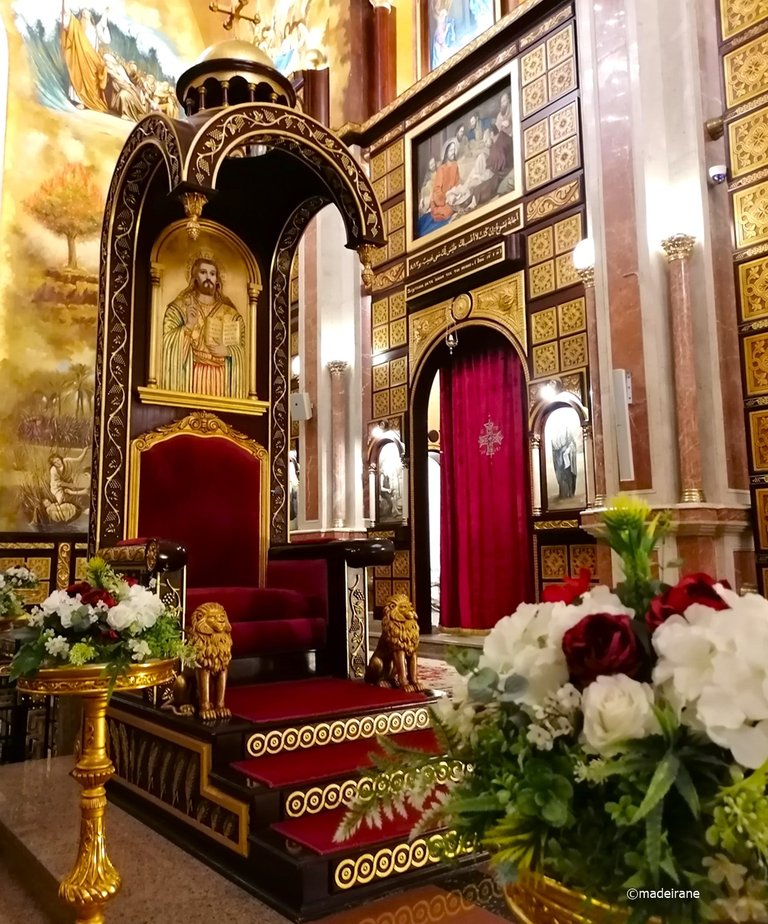
The dome and walls of the temple are completely covered with luxurious wall frescoes, the continuous wall painting turns into plot window mosaics. Soft lighting inside the fragments of painting on the walls, arches and, of course, stained-glass additionally and very harmoniously focuses the gaze on certain moments.
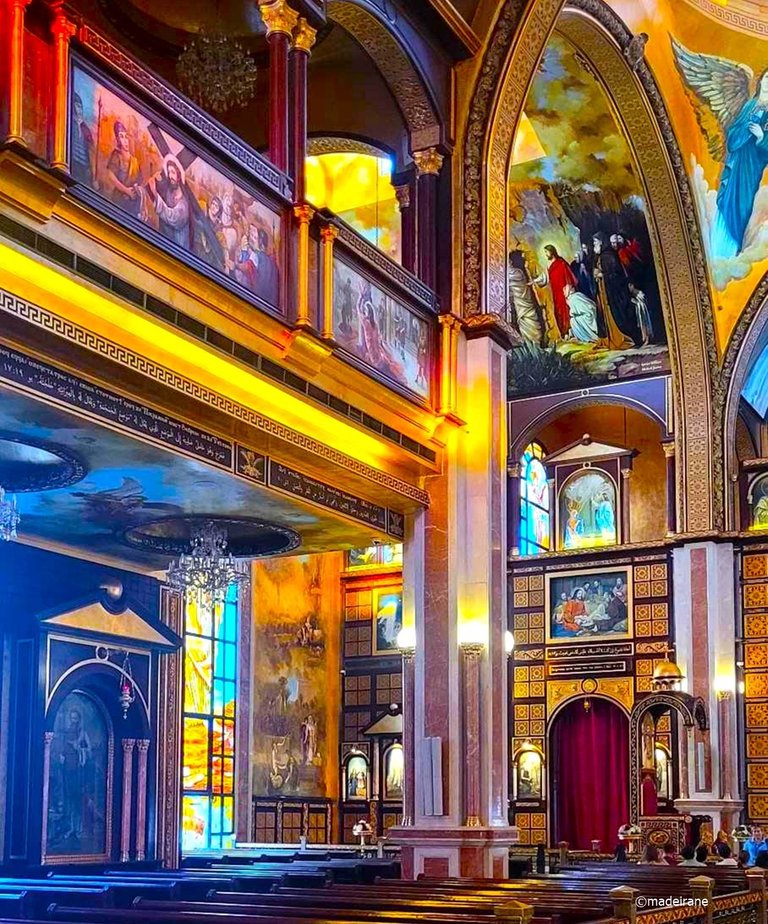
The atmosphere in the church is so calm, peaceful. Here you can go into your thoughts with your head, think, pray and most importantly, no one will touch you!
As our guide told us, three people painted the walls over the course of 10 years. I found other information on the Internet, where it was said about two artists and two years of painting. It is unclear who to believe.
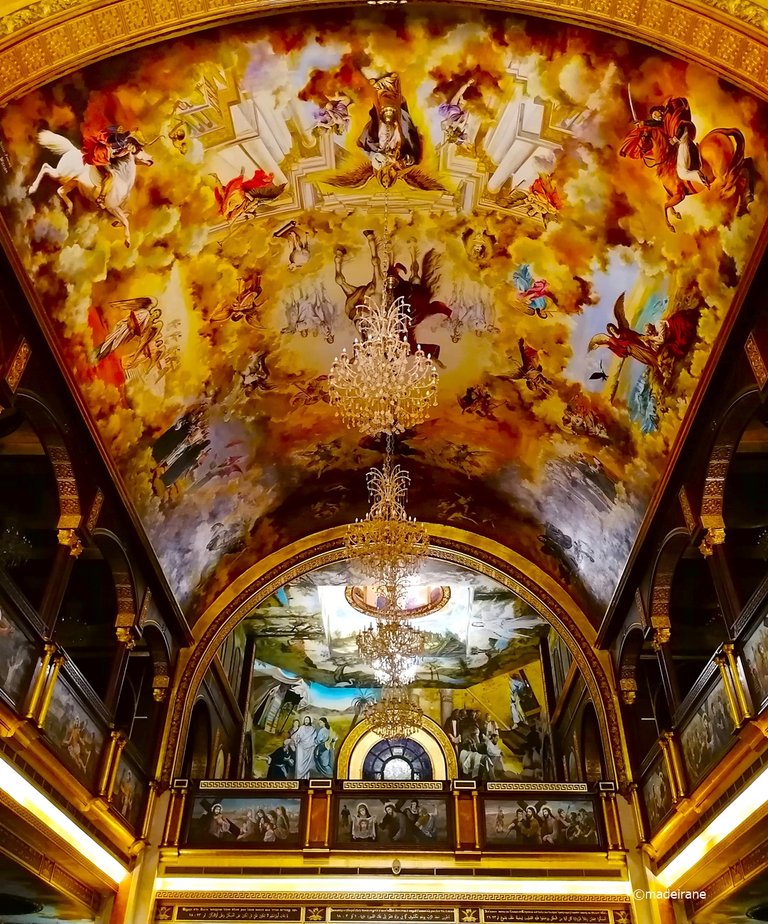
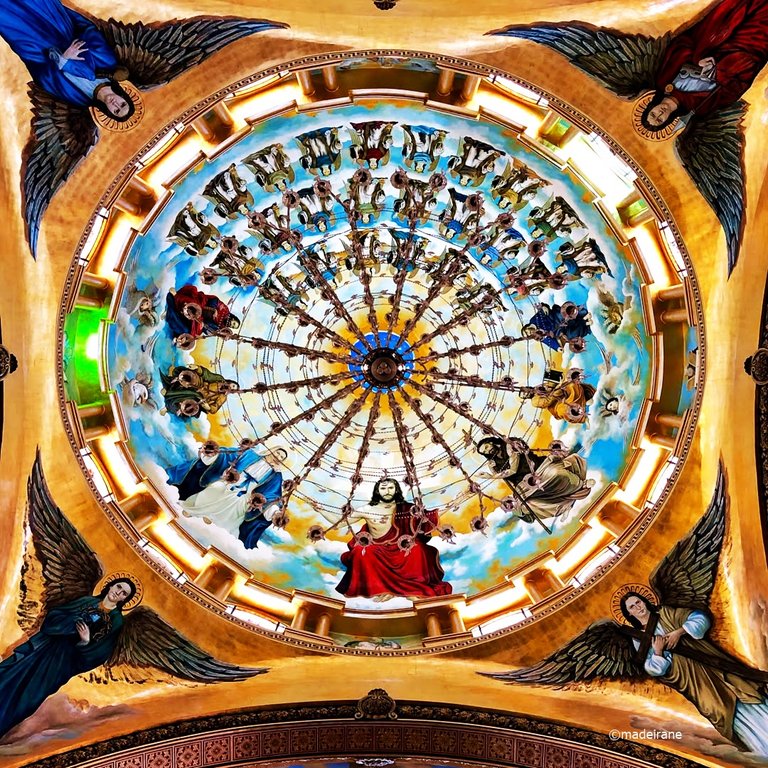
There are benches in the church where you can sit during the service (like in a Catholic Church). The Bible is attached to the backs of the benches, which is written in Arabic and is read from right to left, from the end to the beginning.
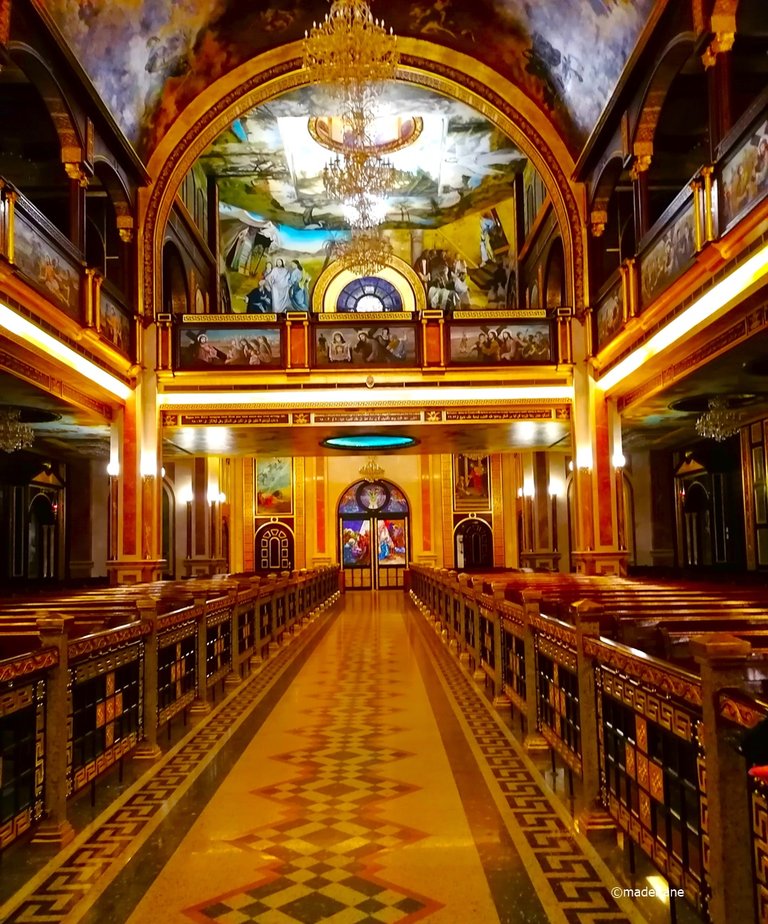
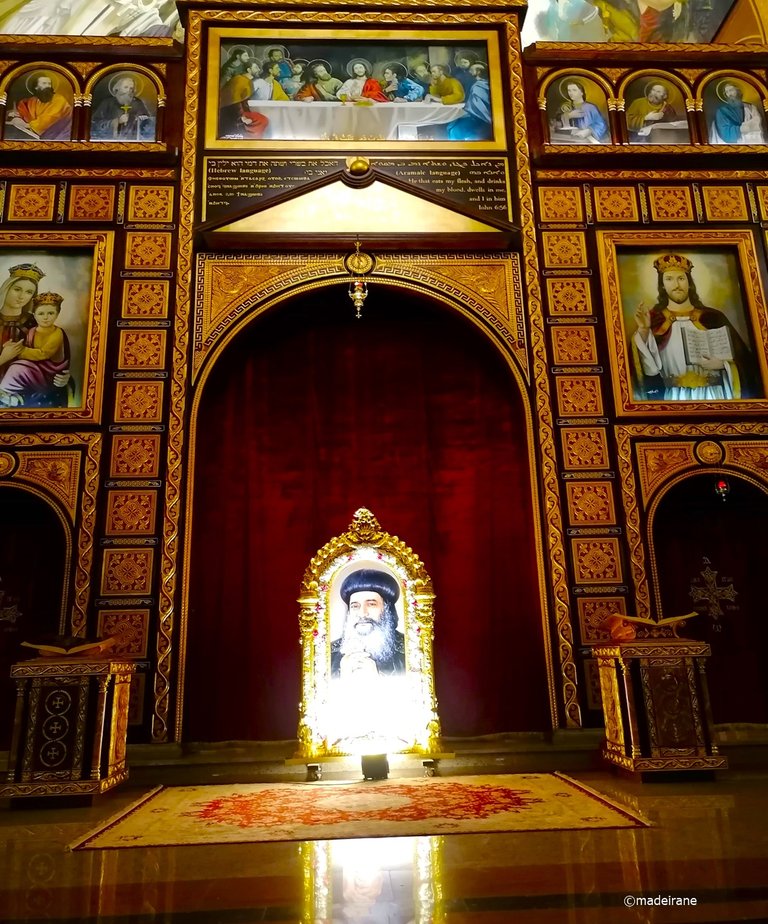
Being representatives of their people, the Copts speak Arabic, while the Coptic language has long been dead and gone into oblivion. You can only encounter a strange ligature in temples like this one. And hear it from the lips of a priest during prayer. Services are held in Coptic and Arabic.
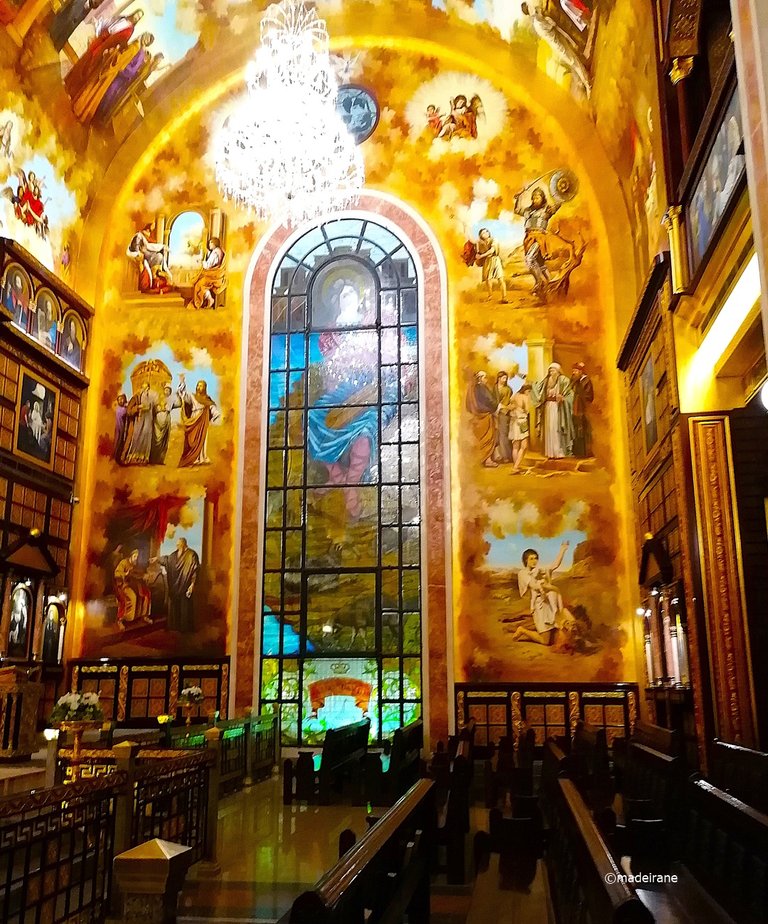
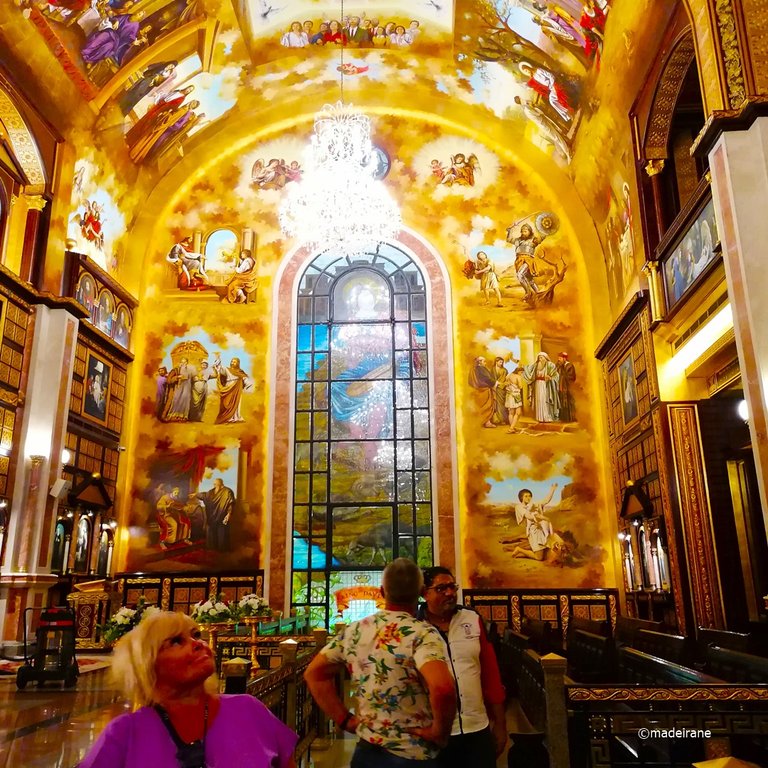
It turns out that if you go deeper into the room and go down the steps, you can get to the lower temple, which is similar to the upper one, but there are relics of saints here. Our guide did not take us there and did not show us anything and did not even tell us that there were relics in this church! Personally, I would love to go there.
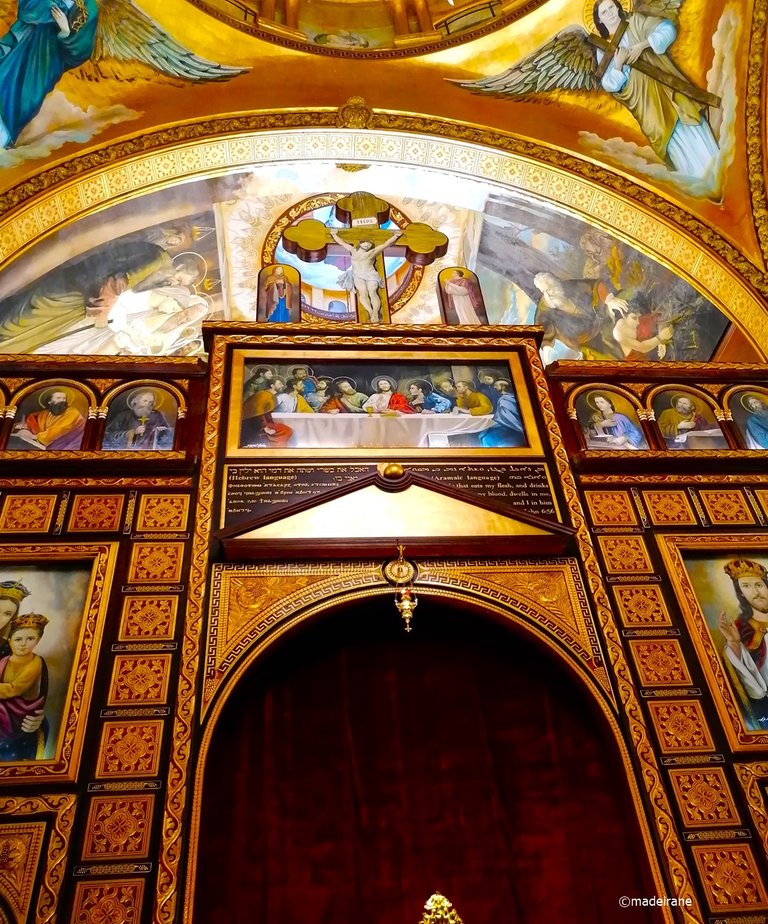
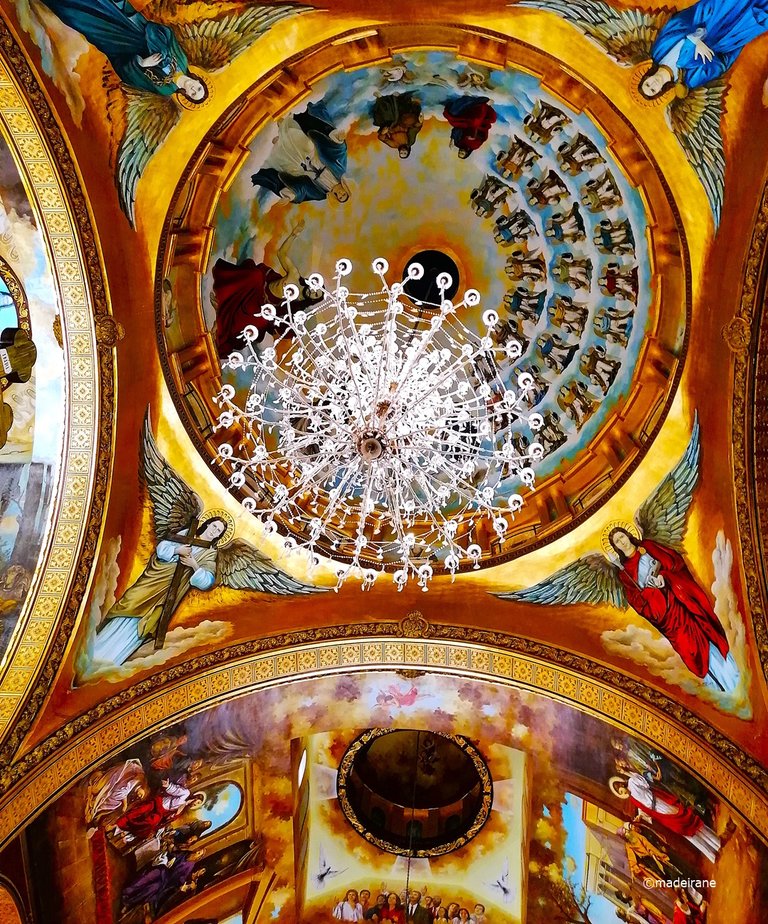
We were very impressed by our rather short visit. We looked at the Coptic Church from the street again and continued on the way to the hotel. Looking through the photos, I myself was once again amazed by the beauty of this temple. It is not for nothing that it is shown as a worthy tourist attraction.
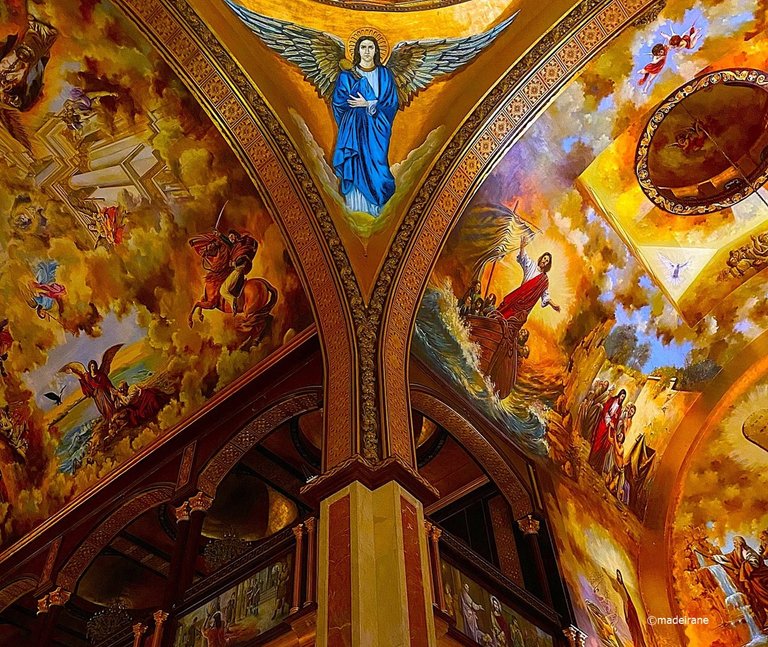
💝💝💝💝💝💝💝💝💝💝
Photos are taken by me.
© 2024With love, @madeirane
Translated from Lithuanian with DeepL.com (free version)
Pirmiausia siunčiu jums šiuos švelnaus vėjo, ryto saulės nušviesto kelio ir nuotykio jausmo krūtinėje fragmentus, kuriuos mintyse saugau nuo kelionės į Egiptą pabaigos. Prisiminus šią kelionę mane apima tokia nostalgiška, beveik fotografinė būsena, todėl kviečiu kartu su manimi leistis į kelionę į Šarm el Šeichą, kuris atvėrė mums savo širdį.
Nuotykiai yra magija, tačiau šį kartą noriu jus pakviesti į kelionę po nuostabią koptų bažnyčią. Tiesą sakant, mes net nežinojome apie tokią bažnyčią, nes prieš tai buvome susižavėję ir lankėme tik mečetes, tačiau mūsų nuostabus gidas, veždamas mus iš Farša kavinės į viešbutį, užsuko į šią bažnyčią ir leidosi kartu su mumis į kelionę po kerintį jos grožį.
Tai koptų ortodoksų bažnyčia Hay-En-Nur Sharma vietovėje. Pastatas pastatytas 2010 m. tikinčiųjų koptų - Egipto krikščionių - aukomis. Gidas, pateikdamas minimalų skaičių datų, papasakojo apie krikščionybę kaip pagrindinę religiją Egipte laikotarpiu prieš mūsų erą. Trumpai tariant, seniai seniai visi Egipte buvo pagonys. 332 m. pr. m. e. Aleksandras Didysis užkariavo Egiptą ir įkūrė Aleksandriją. Egiptas tapo krikščioniškas. 641 m. jį užkariavo arabai ir dauguma jų (90 %) tapo musulmonais, o likusieji liko krikščionimis. Egipto krikščionys vadinami koptais ir yra vienos seniausių krikščionybės atšakų atstovai. Koptai (mūsų laikais) nenešioja kryžių, visi tikintieji ant rankos pasidaro kryžiaus formos tatuiruotę.
Bažnyčią juosia betoninė tvora, prie įėjimo mus pasitiko metalo detektoriai ir apsaugininkai su automatais.
Krikščionių šventyklos architektūra iš išorės yra su minimaliu dekoru ir be auksinių kupolų. O išsikišusios kolonos net primena mečetę. Kryžiai taip pat neįprastos formos - jie orientuoti visomis kryptimis, iš kurių galima pažvelgti: iš apačios, iš visų pusių aplink šventyklą ir net iš viršaus. Kryžius bus matomas visur. Itin modernaus 3D modelio pavyzdys. Tačiau kryžiai ant kupolų aiškiai ir nedviprasmiškai rodo, kad tai koptų krikščionių bažnyčia musulmoniškame mieste.
Monumentalus, išlaikytas stilius su prislopintomis fasadų spalvomis ir lygiais, išplaukiančiais arkų kontūrais, ir, ko neįmanoma nepastebėti, - didžiuliai vitražai su šventųjų veidais.
Tamsoje pamatėme gražų pastatą su išoriniu apšvietimu iš visų šventyklos pusių, pabrėžiančiu pastato kontūrus, kupolus, arkas, be to, efektingai apšviestus vitražus. Įėjimą į bažnyčią saugo du liūtai.
Įžengėme į bažnyčios salę. Įėjau ir buvau apstulbinta. Koks grožis. Minutėlę net buvau netekusi žado! Viskas išdažyta: langai, lubos, sienos. Visi fragmentai iš Biblijos.
Koplyčios bažnyčioje besimeldžiančios moterys neprivalo dengti galvų, bet vis tiek turi prisidengti pečius. Šiuo atveju pasiėmiau ploną skarelę. Įspėjo, kad galima fotografuoti, bet geriau pirma išklausyti pasakojimo apie bažnyčios istoriją, tapybos technikas ir stilius. Apie tai, kas kur pavaizduota ir kokioms biblinėms istorijoms skirta: iš Senojo ar Naujojo Testamento, kur Kristaus atvaizdai, kur šventieji visu ūgiu ar veidais, kur vaizduojamos ištisos Biblijos scenos.
Klausėmės gido, bet vidaus sienų, lubų ir kupolų vaizdai ir paveikslai buvo pernelyg ryškūs ir pompastiški. Visas dėmesys nukrypo į nuostabias freskas, apšviestus vitražus ir ikonostasą. Nesitikėjau tokios prabangos.
Šventyklos kupolas ir sienos visiškai padengtos prabangiomis sienų freskomis, ištisinė sienų tapyba virsta langų mozaikomis. Minkštas vidinis apšvietimas ant sienų esančių tapybos fragmentų, arkų ir, žinoma, vitražų papildomai ir labai harmoningai sutelkia žvilgsnį į tam tikrus momentus.
Bažnyčioje tvyro tokia rami, taiki atmosfera. Čia gali leistis į mintis savo galvoje, mąstyti, melstis ir, svarbiausia, niekas tavęs neliečia!
Kaip pasakojo mūsų gidas, sienas per 10 metų išdažė trys žmonės. Internete radau kitos informacijos, kur buvo rašoma apie du dailininkus ir dvejus metus trukusį tapymą. Neaišku, kuo tikėti.
Bažnyčioje yra suolai, ant kurių galima atsisėsti pamaldų metu (kaip katalikų bažnyčioje). Prie suolų atlošų pritvirtinta Biblija, kuri parašyta arabų kalba ir skaitoma iš dešinės į kairę, nuo pabaigos į pradžią.
Būdami savo tautos atstovai, koptai kalba arabiškai, o koptų kalba jau seniai mirusi ir nugrimzdusi į užmarštį. Su keistuoju raidynu galima susidurti tik tokiose šventyklose kaip ši. Ir išgirsti ją iš kunigo lūpų per maldą. Pamaldos vyksta koptų ir arabų kalbomis.
Pasirodo, jei įeisite giliau į patalpą ir nusileisite laipteliais žemyn, galėsite patekti į apatinę šventyklą, kuri panaši į viršutinę, tačiau čia yra šventųjų relikvijų. Mūsų gidas mūsų ten nenuvedė, nieko neparodė ir net nepasakė, kad šioje bažnyčioje yra relikvijų! Aš asmeniškai mielai ten nueičiau.
Mūsų gana trumpas apsilankymas mums paliko didelį įspūdį. Dar kartą apžiūrėjome koptų bažnyčią iš gatvės pusės ir tęsėme kelionę į viešbutį. Peržiūrėdamas nuotraukas, pats dar kartą buvau nustebintas šios šventyklos grožio. Ne veltui ji rodoma kaip vertas dėmesio turistų objektas.
You can check out this post and your own profile on the map. Be part of the Worldmappin Community and join our Discord Channel to get in touch with other travelers, ask questions or just be updated on our latest features.
The church building is very beautiful, it's really amazing ❤️
Yes, it's truly beautiful. I would say amazing. Thank you.